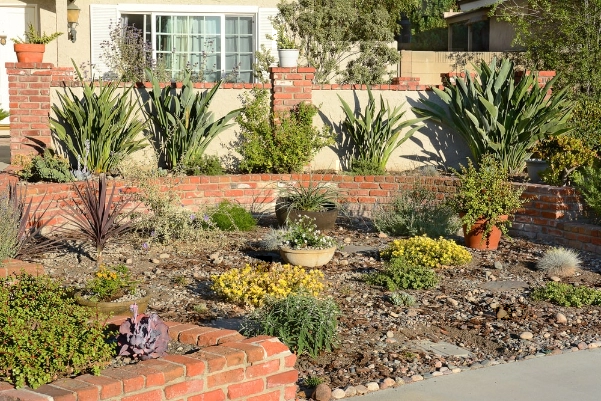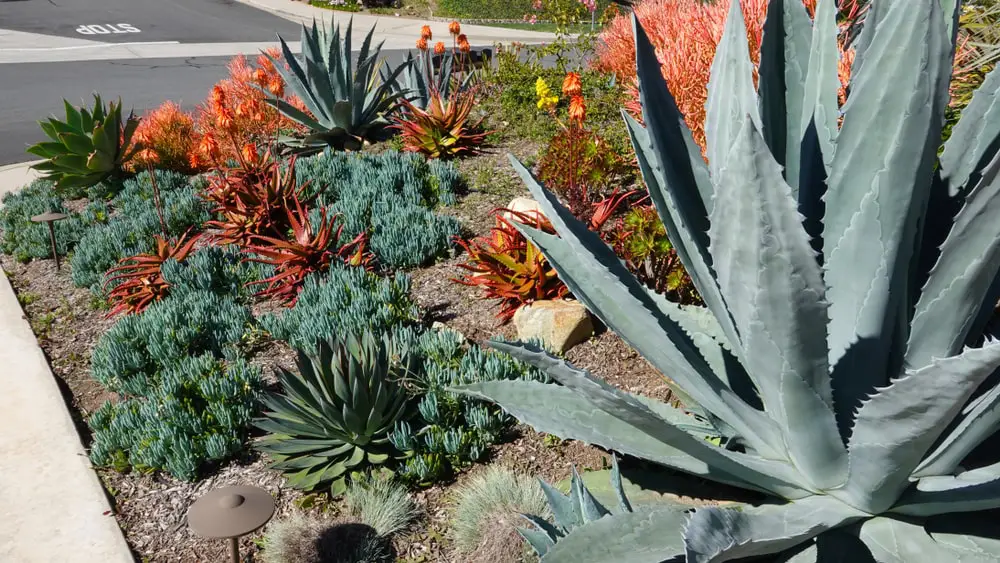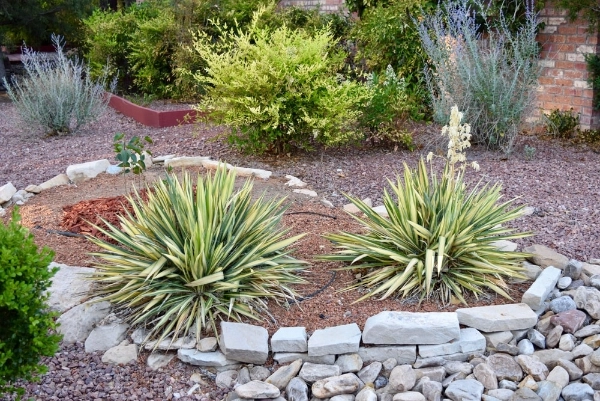Low-Water Landscaping Solutions
.webp)
Last Updated May 11, 2023
Water is the most vital natural resource in the world. Without it, there’s no life. Perhaps you recognize this, so you have already installed water conservation devices inside your homes, such as low-flow toilets and aerated showerheads. However, in the U.S., outdoor water use accounts for about 30 percent of residential water consumption. This amounts to about 58,000 gallons of water per home per year, most of which is used for gardening and lawn irrigation.
Fortunately, having a beautiful yard doesn’t necessarily mean you must use a lot of water or spend a lot of money. With low-water landscaping solutions based on where you live, you can enjoy a lush, healthy lawn and garden – while saving water and money in the process.
Table of Contents:
Why Plant Low-Water Landscaping?

Of course, the biggest reason to plant a low-water landscape is to save money on watering costs. But there are many other benefits as well:
Increased curb appeal, which can lead to higher home value Conservation of natural resources and decreased energy use Creation of habitat for native wildlife Reduced landscaping labor and maintenance costs
Planting a Low-Water Landscape

Whether you’re planning a whole new landscape or sprucing up your existing one, follow these tips for the best success.
Use Native Plants
The number-one way to achieve a low-water landscape is to choose hearty plants native to your region. Because these are adapted to the local soil and climate, they require little water beyond natural rainfall once they’re fully established. They also need minimal fertilizer and are more resistant to local pests and diseases than foreign plant species. The Grounds Guys® can help you select plants native to your part of the country.
Plant Turf Selectively
Grass consumes more water than any other type of landscaping. Replace as much of your lawn as possible with low-water vegetation. Then, select regionally appropriate grass for play areas. Buffalo and Bermuda grasses do quite well in the Southern US; Kentucky bluegrass thrives in the Northwest, and fescue grass is best reserved for the Midwest and Northeast. Moss and evergreen groundcover is also an optional replacement for turf grass in the Northern US.
Recognize Site Conditions
Your yard’s microclimate might affect what you can plant and where. Exposure to the sun and wind, moisture levels, and evaporation rates all require consideration.
Group Plants with Similar Water Requirements
Establish “hydro-zones” in your yard to prevent over or under-watering plants. For example, drought-tolerant dwarf heather and pink jasmine, which are native to the Southwest, should be separated from exotic annual flowers that need more water.
Promote Healthy Soil
.webp)
Your low-water garden will thrive if the soil conditions allow for it.
Test Your Soil
Use a soil test kit to check pH levels, organic matter content, nutrient content, and soil composition. The results may affect what plants are suitable for your yard.
Add Soil Amendments
If your soil is particularly sandy, heavy, nutrient-deficient, or pH-extreme, soil amendments can improve growing conditions to make the garden of your dreams a possibility. Examples of soil amendments include lime, peat, compost, and gypsum.
Aerate
Soil becomes compacted over time, reducing the amount of oxygen that can reach plant roots. Aeration improves nutrient delivery and water absorption to minimize runoff.
Use Mulch
Surround trees, shrubs, and flower beds with mulch to slow evaporation, inhibit weeds, moderate soil temperature, and reduce erosion. You might use bark chips, wood grindings, pine straws, or gravel.
Maintain Your Low-Water Landscape

Ongoing maintenance is the key to successful low-water landscaping. These tips help you save time, water, and money.
Water Wisely
Learn your plants’ watering needs and avoid over or under-watering them. Water deeply during the early morning hours, never in the heat of the day, and only give your plants a drink when they need it. Routinely assess your automatic irrigation and drip systems, if you have them, to ensure they are meeting your garden’s needs. If possible, harvest rainwater in barrels and use this for landscape irrigation.
Raise Your Mower Cutting Height
Taller turf grass promotes deeper, stronger root growth and shades the soil for slower evaporation and fewer weeds. Only cut your grass once it reaches two to three inches long.
Minimize Fertilizer Use
Some types of fertilizer encourage thirsty top growth that increases watering and pruning requirements. Native plants shouldn’t need much fertilizer, but if you choose to use it, select a slow-release product that feeds plants gradually for deep, healthy root growth.
Provide Regular Maintenance
Replace mulch once a year, remove weeds as they appear, and de-thatch your turf grass to keep your landscape going strong.
Contact The Grounds Guys for Professional Landscaping Services
With this combination of techniques, you’ll soon have a beautiful, low-water landscape that works best for the region where you live. Trust The Grounds Guys to help you achieve the perfect yard! Contact us today to request an estimate.
 Click to call
Click to call


